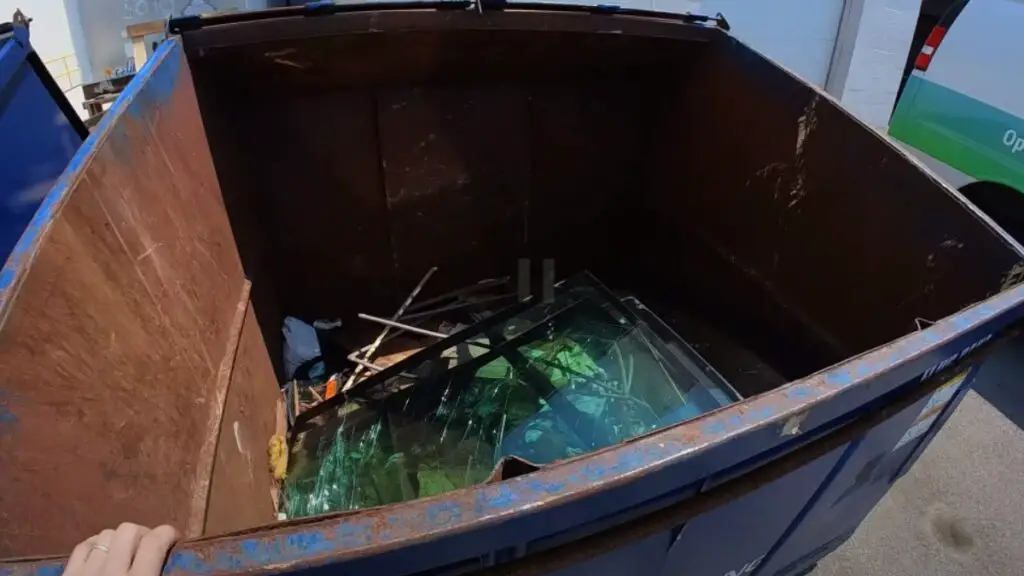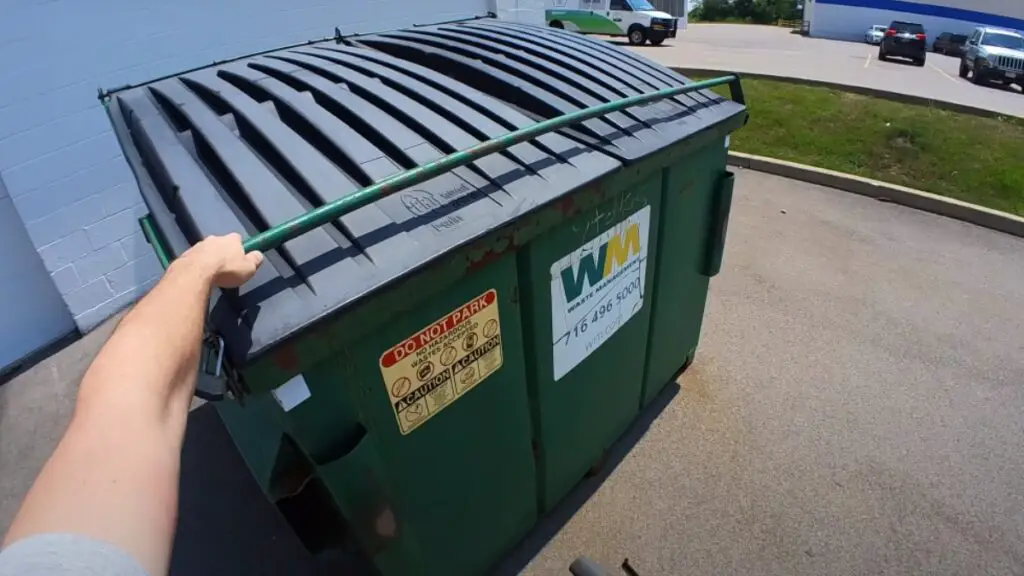Choosing the right dumpster size can feel like a daunting task, especially if it’s your first time. But don’t worry, it’s easier than you think!
So, in this guide I’ll help you understand types of dumpsters, their capabilities, and factors to choose the right dumpster for your project.
Whether you’re clearing out your attic, remodeling your kitchen, or managing a construction site, we’ve got you covered.
Let’s begin!

How to Choose the Right Dumpster Size
You can choose the right dumpster size depending on the volume of waste you anticipate. Keep in mind, 1 cubic yard equals 27 cubic feet.
A 10-yard dumpster holds approximately 3 pickup truck loads of debris. This is suitable for small projects like garage cleanouts or simple landscaping jobs.
For medium home cleanouts or remodeling projects, a 20-yard dumpster (20 cubic yards) would be ideal.
Larger projects like construction or whole-home cleanouts would require a 30-yard or 40-yard dumpster.
Different Types of Dumpsters
1. Roll-Off Dumpsters
Roll-off dumpsters are open-top containers typically used for large-scale waste disposal.
They’re named “roll-off” because they literally roll off the back of the truck that delivers them.
2. Front Load Dumpsters
Front load dumpsters are a common type seen around commercial properties. They’re designed for ongoing services such as at restaurants, offices, or apartment complexes.
They are named for the mechanism trucks use to lift and empty them. Front load dumpsters come with lids to keep waste contained.
3. Rear Load Dumpsters
They’re designed with a sloped rear and large hinged door. This makes waste disposal easy and convenient.
They can handle a fair volume of waste and are ideal for locations with limited space.
They’re commonly used in city areas because they can be efficiently emptied by collection trucks.
4. Residential Dumpsters
These are smaller dumpsters typically used for home projects or cleanouts.
They are perfect for handling waste from home renovations, yard clean-ups, garage or basement decluttering.
5. Construction Dumpsters
They, also known as roll-off dumpsters, are large, open-top waste containers. They are typically used at construction sites for the disposal of building materials such as drywall, shingles, and wood.
6. Concrete & Dirt Dumpsters
Concrete & Dirt Dumpsters are specific types of dumpsters used in construction and landscaping projects.
These dumpsters have a lower fill line due to the weight of these materials, ensuring safe transportation and disposal.
7. Demolition Dumpsters
Demolition dumpsters are large containers used for waste disposal during demolition projects.
They’re designed to hold heavy, bulky items like concrete, brick, or asphalt. These dumpsters make cleanup easier and ensure safe disposal.
8. Scrap Metal Dumpsters
They are specialized containers and used for collecting and transporting various types of metal waste.
These dumpsters are sturdy, durable, and designed to handle heavy weight, which makes them the perfect solution for metal recycling.
9. Yard Waste Dumpsters
Yard Waste Dumpsters are specifically designed for green waste disposal. This includes things like grass clippings, leaves, tree branches, and other natural debris from your yard.
They’re ideal for landscaping projects or seasonal yard cleanups.
10. Recycling Dumpsters
Recycling dumpsters are specific types of dumpsters used for collecting recyclable materials.
They help in segregating waste like paper, plastic, metal, and glass. These materials are later processed and transformed into new products.
Using recycling dumpsters helps in waste management and environmental conservation.
Dumpsters Sizes and their Capacities
There are several dumpsters sizes options to consider:
10 Yard
These dumpsters are typically 12 feet long, 8 feet wide, and 3.5 feet high. They can hold about 10 cubic yards of material, which is roughly equivalent to 3 pickup trucks’ worth of waste.
15 Yard
15-yard dumpsters, slightly larger, can hold about 15 cubic yards of waste. This equates to approximately 4.5 pickup trucks of debris.
20 Yard
These are 22 feet long, 7.5 feet wide, and 4.5 feet high. They can contain around 20 cubic yards of debris, or about 6 pickup trucks’ worth.
30 Yard
On the other hand, 30-yard dumpsters can hold 30 cubic yards of waste, about 9 pickup trucks’ worth. They are usually 22 feet long, 7.5 feet wide, and 6 feet high.
40 Yard
Lastly, 40-yard dumpsters are the largest standard size available.
They typically measure 22 feet long, 7.5 feet wide, and 8 feet high, and can hold about 40 cubic yards of debris, equal to 12 pickup trucks’ worth of material.
Factors to Consider while Choosing Dumpster Size
1. Type of Project
Firstly the type of project significantly influences the size of the dumpster you’ll need.
For example, a small home renovation or decluttering project may require a 10-yard dumpster, sufficient for handling waste from a single room.
If you have a larger project such as a full home renovation or a large landscaping endeavor, you may need a 20 or 30-yard dumpster.
For massive construction or demolition projects, a 40-yard dumpster would likely be your best choice.
2. Types of Materials
When selecting the right size of dumpster, you should consider the types of material in your waste. It can help you select the right size and rental company for your project.
Firstly, consider the weight of the materials. Heavy materials, such as concrete, bricks, or soil, require a smaller but sturdier dumpster to withstand the weight.
Secondly, consider the volume of waste. Large items or materials that take up significant space, like furniture or large amounts of yard waste, may require a larger dumpster.
Lastly, some materials have specific disposal requirements due to environmental regulations.
Like, hazardous waste or electronics often cannot be mixed with general waste and require separate dumpsters.
3. Available Spaces
It refers to the space where you intend to place the dumpster once it’s delivered.
Iif you intend to place the dumpster in your driveway, you’ll need to consider the dimensions of your driveway and ensure there’s enough space for the dumpster.
This includes the footprint of the dumpster and the clearance space for the delivery truck to safely and efficiently place the dumpster.
You can also read what is dumpster rental services, and where to find best rental dumpsters?
4. Local Regulations
Different cities or municipalities often have specific rules about dumpster sizes and placements.
Some localities may restrict the maximum size of a dumpster that can be placed in residential areas due to concerns over blocking the roadway or causing inconvenience to neighbors.
In other regions, there might be stringent rules about waste segregation and disposal, dictating the type of waste that can be dumped in your chosen dumpster size.
So, if you’ve made your mind you can visit our website and order a rental dumpster.

Frederick Perez is the founder of Scrape Dude. He loves exploring and finding hidden treasures in unexpected places. Frederick has been dumpster diving and gold panning for years, turning his hobby into our website to share his adventures. He’s known for his friendly advice and exciting stories, inspiring others to discover the joy in these unique hobbies. His expertise makes Scrape Dude a trusted and fun place to learn and explore.


